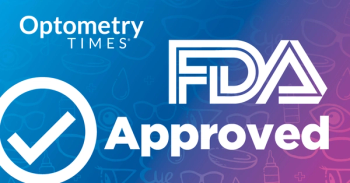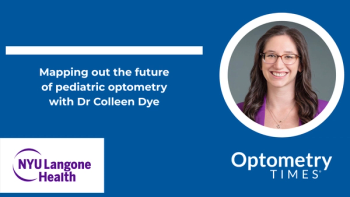
What happened in optometry this week: October 14 - October 18
Catch up on what happened in optometry during the week of October 14-October 18.
Catch up with what Optometry Times shared this week:
FDA approves enVista Envy IOL from Bausch + Lomb
By Emily Kaiser Maharjan, Assistant Managing Editor
Bausch + Lomb announced FDA approval of its latest enVista intraocular lens (IOL), the Envy full range of vision IOL. The Envy offers a continuous range of vision that promotes dysphotopsia tolerance, according to the company.1 The lens demonstrated excellent long-term outcomes in US-based clinical trials as well as Canadian studies, and leverages ActivSync Optic intelligent energy distribution to perform well in all lighting conditions.2,3 The enVista Envy was previously approved by Health Canada in May of 2024.
Rising diabetic retinopathy rates in youth could indicate potential public health crisis
By David Hutton, Managing Editor, Ophthalmology Times
Diabetic retinopathy has tended to be regarded as a rare occurrence in young patients diagnosed with diabetes, but a recent paper details the growing rates of the disease in young people as a looming “potentially unappreciated public health catastrophe.”
You and Eye: Myopia cannot be viewed as a specialty in today's practice setting
By Miriam Korik, OD; Justin Kwan, OD, FAAO; and Emily Kaiser Maharjan, Assistant Managing Editor
In this episode of the You and Eye podcast, Miriam Korik, OD, and Justin Kwan, OD, FAAO, delve into the evolving landscape of myopia management within optometry, reflecting on its transition from a niche specialty to a crucial component of primary care. Drawing on their experiences and insights, they discuss the growing prevalence of myopia and the pressing need for more optometrists to integrate effective management strategies into their practices. Kwan shares practical advice for new graduates and seasoned practitioners alike, emphasizing the importance of collaboration and support when introducing myopia management techniques. They explore various methods for starting this process, even in practices without advanced technology, while also highlighting the value of utilizing available resources and consultants. This dialogue underscores the significance of proactive eye care in addressing the myopia epidemic and equips optometrists with actionable steps to enhance their practice.
That’s some nerve! Ocular drug delivery and dry eye
By Katherine M. Mastrota, MS, OD, FAAO, Dipl ABO
Eye care’s earliest stabs at treating ocular surface disease (OSD; also referred to as dysfunctional tear film, dry eye disease [DED] or syndrome, lacrimal keratoconjunctivitis, keratitis sicca, meibomian gland [MG] dysfunction, etc) primarily aimed to add eye elements that were lacking in the tear film to the surface of the eye or to reduce tear film instability. The tear film was supplemented via solutions, gels, suspensions, ointments, emulsions, and/or dissolving conjunctival cul-de-sac inserts. As we became sophisticated in our experience and knowledge of the eye surface and tear production, we learned that tempering inflammation was paramount to managing disease signs and symptoms. The molecules that modulate inflammation are also added to a variety of vehicles that are dripped onto the eye surface. Autologous serum and, more recently, recombinant human nerve growth factors are also instilled topically in the eye. Additionally, more than a dozen dry eye pipeline drugs are stated to be delivered via local, topical application.
Ocular Therapeutix accelerates timelines for SOL-1 Phase 3 trial of Axpaxli for wet AMD
By Jordana Joy, Associate Editor
Biopharmaceutical company Ocular Therapeutix has announced accelerated timelines for its SOL-1 Phase 3 registrational clinical trial of Axpaxli for wet age-related macular degeneration (AMD).1 The study is now expected to be fully enrolled with all 300 patients randomized by the end of 2024, with topline data now expected during the fourth quarter of 2025, according to a news release. Prior guidance for Ocular Therapeutix was to complete enrollment by the end of the first quarter of 2025.1
Newsletter
Want more insights like this? Subscribe to Optometry Times and get clinical pearls and practice tips delivered straight to your inbox.



















































.png)


